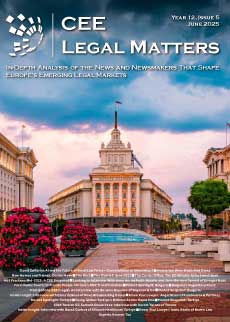It’s mid-July, the summer is in full swing, and most of us are either on annual leave or eagerly counting down the days until we can finally unplug and recharge. That’s why I decided to dedicate this light, summer-friendly topic, perfect for reading in the shade at +35°C, to reminding us that the right to paid annual leave is not only one of the fundamental human rights, but also a necessary response to the lifestyle we lead.
We live in an age of constant availability, never-ending notifications, messages, and tasks. In today’s work culture, workaholism is often celebrated as a sign of loyalty and capability, and more often than not, we are the ones imposing unrealistic standards and deadlines. All of this leads to chronic fatigue, lack of concentration, burnout, anxiety, and similar conditions, which in turn negatively affect work performance and productivity.
The only real way to eliminate these “negative consequences” is to rest well, which can sometimes feel incredibly difficult.
The right to paid annual leave for all categories of workers was first recognized in France in 1936. In Yugoslavia, it was initially reserved for certain categories of employees, such as civil servants, commercial and senior staff, and only after World War II was it recognized as a general right.
This universally proclaimed and recognized right is enshrined in international labor law, through various ILO conventions, the International Covenant on Economic, Social and Cultural Rights, as well as in national constitutions, labor laws, and collective agreements. Importantly, in most countries, the right to paid annual leave is inalienable, meaning an employee cannot waive it, an employer cannot deny it, and it cannot be replaced with financial compensation, except in the event of employment termination. In certain jurisdictions, this right is discretionary, meaning an employee can partially waive it or exchange it for compensation.
Montenegrin legislation treats the right to paid annual leave as an inalienable right, and the minimum duration of annual leave is, in line with European practice, 20 working days. In comparative practice, aligned with our legal system, it is generally recommended that annual leave be used continuously, and in some countries even during summer months, specifically to coordinate with school holidays and better support family needs. In our law, employees typically use their annual leave in one or two parts, with the first part, lasting at least 10 consecutive working days, required to be taken within the calendar year, and any remaining days no later than June 30 of the following year. Since 2019, the law allows, at the employee's request and if the employer’s work process permits, that annual leave be used in more than two segments, while still maintaining the obligation to use the first 10-day portion continuously.
This legal solution adapts the regulation to the evolving needs of employees who more frequently choose to split their annual leave, often combining a few days off with public holidays to secure multiple shorter breaks throughout the year.
This approach to taking leave has become widely accepted. In practice, even the mandatory first portion of annual leave, which by law should last at least 10 working days, is often divided and taken in multiple segments, despite the fact that official decisions on leave remain aligned with legal provisions.
This trend is clearly driven by greater access to travel, low-cost flights, affordable vacation packages, the challenge of coordinating vacation time with family or friends, and our constant desire to experience something new—visit another concert, explore a new outlet mall or waterpark, or try out a different ski resort. This raises a valid question: are we actually resting during these frequent getaways, or just tiring ourselves out even more?
You’ve surely found yourself at the airport frantically searching for a socket to charge your laptop and finish a report, or reading a message from a client or boss while waiting in line at passport control, or feverishly checking your emails right after landing. And let’s not forget all the times you returned from vacation late on a Sunday night, only to be in meetings first thing Monday morning, and by Wednesday, you already feel like your trip happened two months ago.
Taking all of this into account, it becomes clear that in such a context, the primary protective purpose of paid annual leave is not being fulfilled. That purpose is to protect the employee’s health, reduce exposure to work-related risks, allow for mental and intellectual recovery, relaxation, enjoyment, and relief from accumulated work-related fatigue, as so eloquently defined in legal theory.
A number of scientific studies have also confirmed that taking time off improves cognitive function, mood, and interpersonal relationships; that the greatest benefits are associated with so-called passive activities such as reading, sunbathing, and the like; that vacation effects peak around the 8th day of leave; and that these effects fade quickly if the time off is not used meaningfully. Even short vacations (3-4 days) can bring noticeable benefits if they involve a true psychological break.
I believe it is essential not only to formally respect the right to paid annual leave, but also to genuinely use it as intended and regulated, for rest, recovery, and personal well-being.
The best results are achieved when time off is thoughtfully planned: a longer break for a full reset, combined with several shorter ones throughout the year to maintain regular energy levels.
Only when we give ourselves and our employees the opportunity to truly rest can we return to work refreshed, motivated, and productive, ready to give our best, without burning out.
By Marija Zivkovic, Partner, JPM Montenegro














